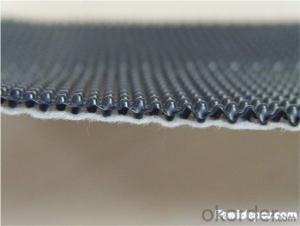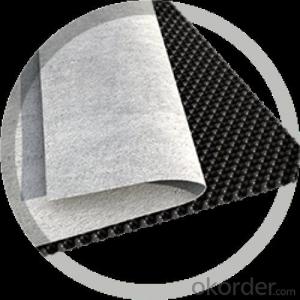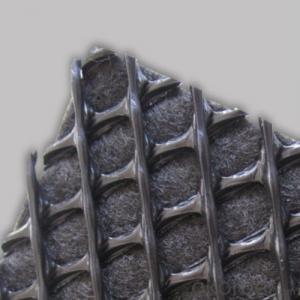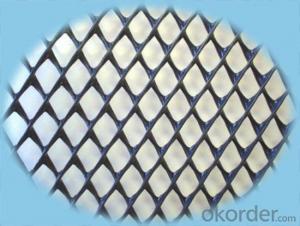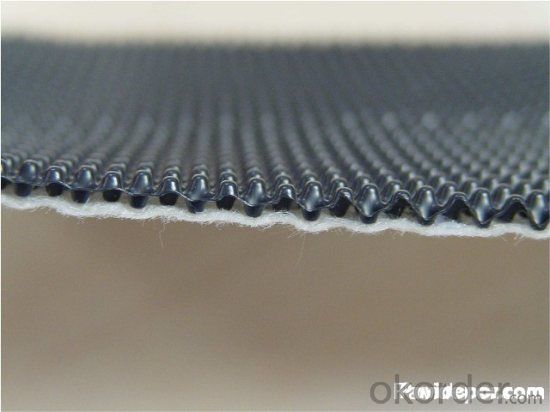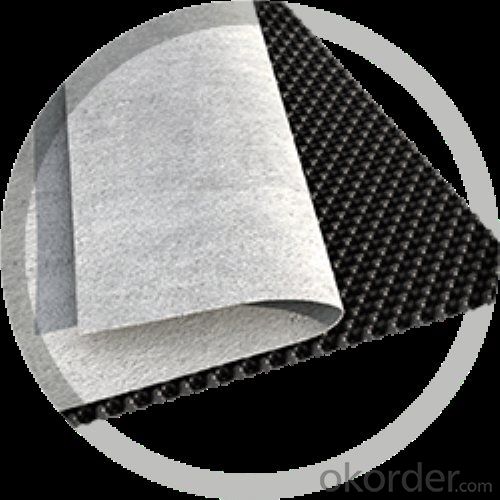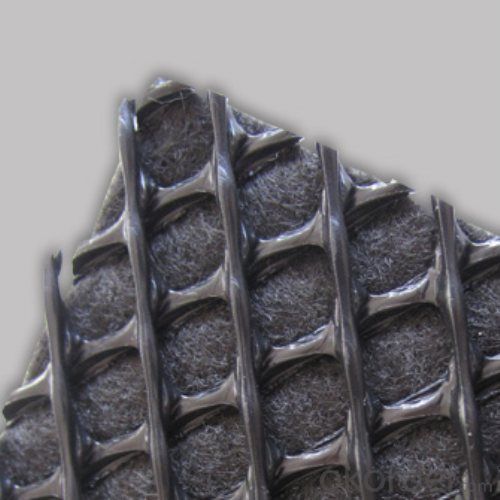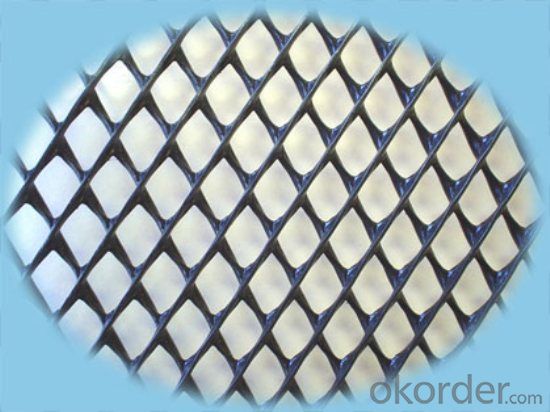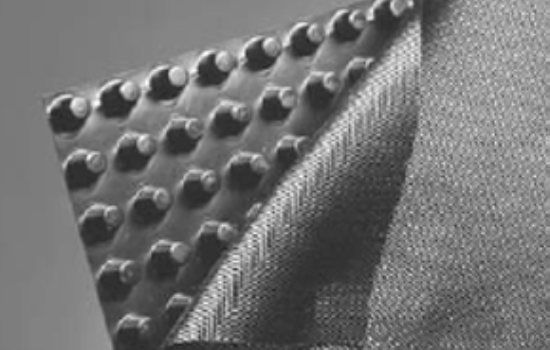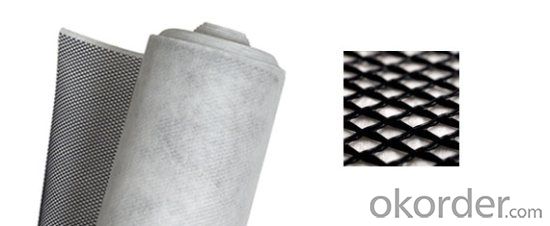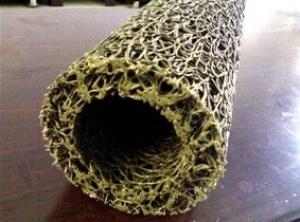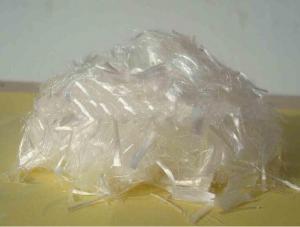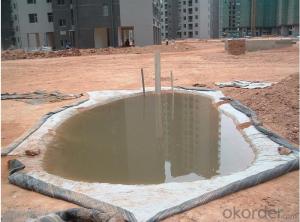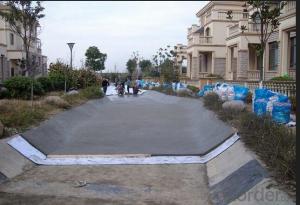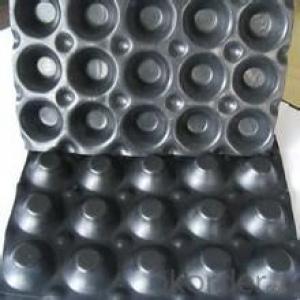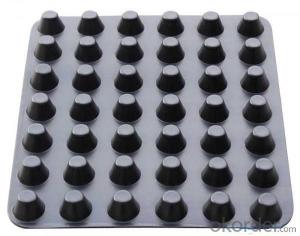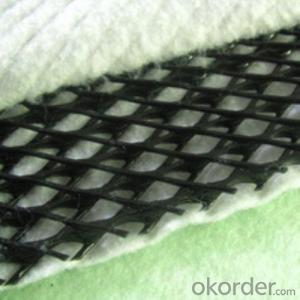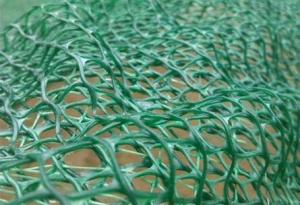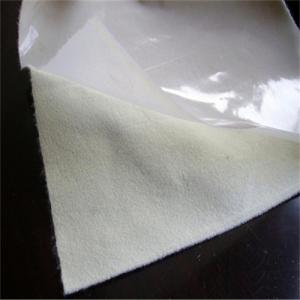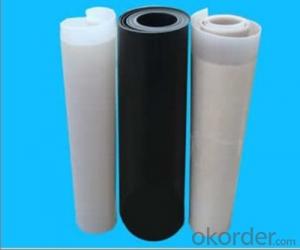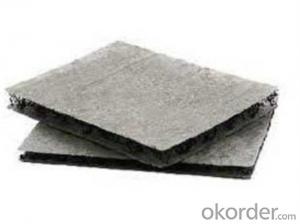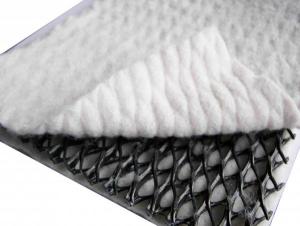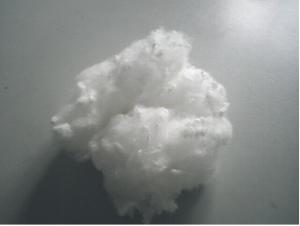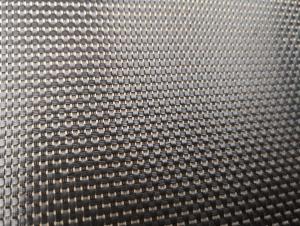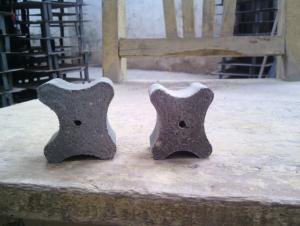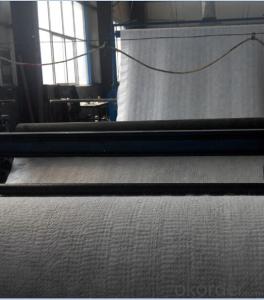Composite Geotextiles for Architectural Engineering
- Loading Port:
- Qingdao
- Payment Terms:
- TT or LC
- Min Order Qty:
- 5000 m²
- Supply Capability:
- 100000 m²/month
OKorder Service Pledge
OKorder Financial Service
You Might Also Like
Composite Geotextiles for Architectural Engineering
Description Of Composite Geotextiles for Architectural Engineering
Composite material is a general term for the synthetic materials used in civil engineering. As a kind of civil engineering materials, it is to synthetic polymers, such as plastics, chemical fiber, synthetic rubber as raw material, made of various types of products, placed inside the soil, surface, or various kinds of soil play to strengthen or to protect the soil. The application of the technology of soil engineering synthetic materials will be divided into the type of the material of the soil, the soil, the soil, the special material and the composite. The special materials for the special materials include the soil engineering film bag, the soil engineering net, the geotechnical mesh pad, the soil working chamber, the soil texture, the bentonite mat, the polystyrene foamed plastics (EPS), etc.. The composite material is made from the above mentioned materials, such as composite coating, composite material, composite material, composite waterproof and drainage (drainage), etc..
Main Features of Composite Geotextiles for Architectural Engineering
The advantages of the composite is that the weight is light, and the overall continuity is good (can be made into a large area of the whole), construction is convenient, high tensile strength, corrosion resistance and resistance to microorganisms. The disadvantage is that, without special treatment, anti ultraviolet ability, such as exposure to ultraviolet radiation, is easy to aging, but if not directly exposed, the anti aging and durability performance is still high.
Applications of Composite Geotextiles for Architectural Engineering
1, for the stability of highway, railway roadbed.
2, used to bear the weight of the embankment and shallow water treatment.
3, used to prevent the landslide and the load of the gravity of the hybrid retaining wall.
IMages of Composite Geotextiles for Architectural Engineering
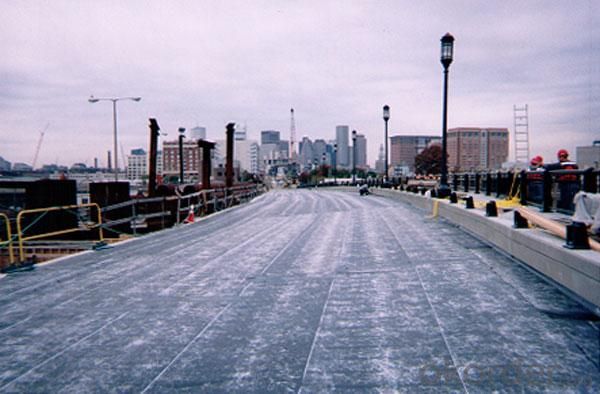
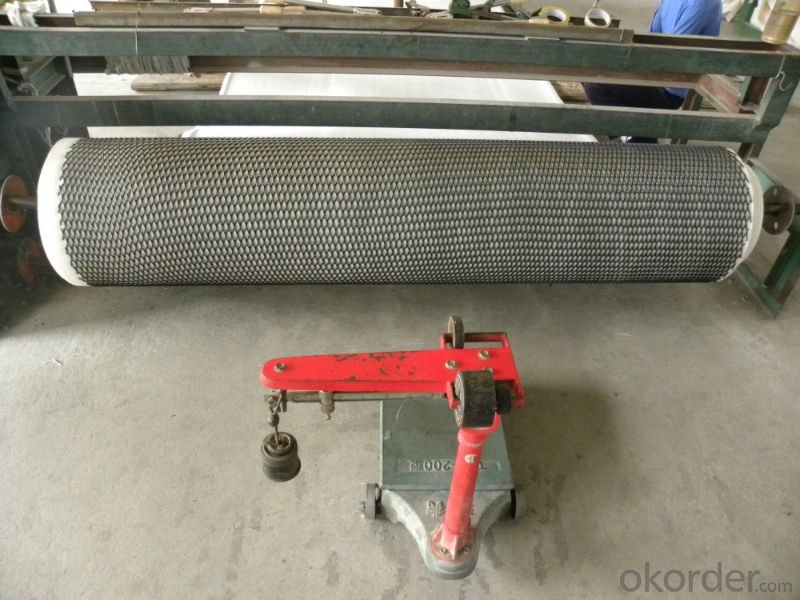
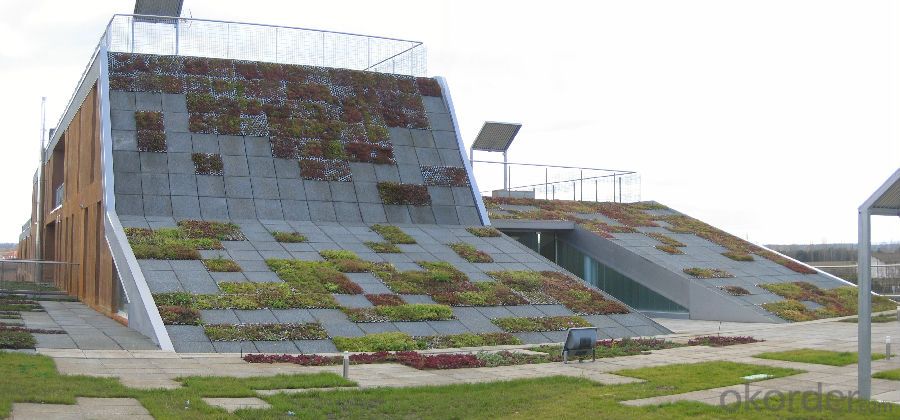
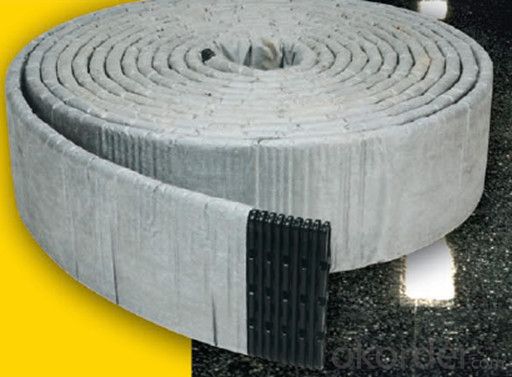
FAQ:
1. What are we supplying?
We are specialized in producing .geotextile , geocell, geogrid, geomembrane
2. How Many years experience do we have?
We have been exported to more than 15 countries in the past 10 years.
3. How long do we usually reply your request?
We always reply our customer within 12 hours.
- Q: Can earthwork products be used for slope stabilization in earthquake-prone areas?
- Yes, earthwork products can be used for slope stabilization in earthquake-prone areas. These products, such as geosynthetics and retaining walls, can help prevent soil erosion and slope failures during seismic events. They provide reinforcement and stability to the slopes, reducing the risk of landslides and other hazards associated with earthquakes.
- Q: Can earthwork products be used for creating artificial waterfalls?
- Yes, earthwork products can be used for creating artificial waterfalls. Earthwork products such as rocks, boulders, and soil can be strategically placed to create the desired shape and structure of the waterfall. Additionally, these materials can help to create a natural and authentic appearance for the artificial waterfall.
- Q: How do geosynthetic clay liners prevent leakage in landfill caps?
- Geosynthetic clay liners (GCLs) prevent leakage in landfill caps by utilizing a composite construction that combines a layer of bentonite clay between two geotextiles. This unique design creates a barrier system that is highly effective in containing liquids and preventing their migration. The bentonite clay in the GCLs has a high swelling capacity and low permeability, which means it can absorb water and expand to form a tight seal when exposed to moisture. This swelling action, combined with the geotextiles' reinforcement and filtration capabilities, forms a robust barrier that minimizes the risk of leakage and protects the environment from potential contamination.
- Q: What are the recommended maintenance practices for earthwork products?
- The recommended maintenance practices for earthwork products include regular inspection, cleaning, and repair. It is important to regularly inspect the earthwork products for any signs of damage, such as cracks, leaks, or erosion, and address them promptly. Cleaning the products regularly, especially after heavy use or exposure to harsh weather conditions, helps to remove dirt, debris, and prevent clogging. Additionally, repairing any identified issues immediately can prevent further damage and ensure the longevity of the earthwork products.
- Q: How do earthwork products contribute to erosion control on river and canal banks?
- Earthwork products, such as geotextiles, geogrids, and erosion control blankets, play a crucial role in erosion control on river and canal banks. These products are designed to stabilize the soil and prevent erosion by reinforcing and protecting the banks against the erosive forces of water flow. Geotextiles, for instance, act as filters, allowing water to pass through while retaining soil particles, thereby reducing sediment transport and preventing bank erosion. Geogrids provide structural stability to the soil, enhancing its load-bearing capacity and preventing slippage or collapse. Erosion control blankets, on the other hand, offer immediate protection by shielding the soil surface from raindrops, reducing soil erosion caused by surface runoff. Overall, earthwork products provide effective erosion control measures that help maintain the integrity and stability of river and canal banks.
- Q: What are the different installation guidelines for earthwork products?
- The installation guidelines for earthwork products may vary depending on the specific product being used. However, some general guidelines to consider include: 1. Preparing the site: Clear any vegetation, debris, or existing structures from the area where the earthwork product will be installed. 2. Excavation: Dig a trench or hole of the appropriate size and depth to accommodate the product. 3. Compaction: Compact the soil at the bottom of the excavation to provide a stable base for the earthwork product. 4. Placement: Carefully place the earthwork product into the excavation, ensuring it is properly aligned, level, and positioned according to the manufacturer's instructions. 5. Backfill: Fill the space around the product with select backfill material, compacting it in layers as necessary to provide stability and prevent settling. 6. Securing: If required, secure the earthwork product using appropriate fasteners or connectors as specified by the manufacturer. 7. Finishing: Complete any additional steps such as grading, compaction, or landscaping to ensure the earthwork product is properly integrated into the surrounding environment. It is crucial to consult the specific installation guidelines provided by the manufacturer for the earthwork product being used, as they may include additional or specific instructions for optimal installation.
- Q: Can earthwork products be used for constructing boat ramps?
- Yes, earthwork products such as soil, gravel, and rocks can be used for constructing boat ramps. These materials can be used to build the base and slope of the ramp, providing stability and traction for boats during launching and loading. Additionally, earthwork products can be shaped and compacted to create a smooth and durable surface for boat ramp construction.
- Q: Seeking 3500 words civil engineering materials, urgent use
- As a project management participant, in the work practice should be thinking, analysis, summary, improvement, improve.
- Q: What are the advantages of using geotextile mats in erosion control for riverbanks?
- Geotextile mats offer several advantages for erosion control on riverbanks. Firstly, they provide immediate protection by preventing soil erosion and retaining sediment, effectively stabilizing the riverbank and reducing the risk of bank collapse. Secondly, these mats allow water to pass through while filtering out sediments, enabling natural water drainage and preventing the buildup of excess water pressure that could further erode the riverbank. Additionally, geotextile mats are durable and resistant to degradation, ensuring long-term erosion control. They are also easy to install and maintain, making them a cost-effective solution for riverbank stabilization. Overall, the use of geotextile mats in erosion control for riverbanks offers effective and sustainable protection against erosion, maintaining the ecological balance and preserving the stability of river ecosystems.
- Q: How do geosynthetic materials contribute to groundwater protection?
- Geosynthetic materials contribute to groundwater protection by providing a barrier between contaminants and the underlying aquifers. They prevent the migration of pollutants, such as chemicals or waste, by acting as a physical barrier and reducing the risk of contamination. Additionally, geosynthetics can aid in the management and control of stormwater runoff, reducing the infiltration of pollutants into the ground and protecting groundwater quality.
Send your message to us
Composite Geotextiles for Architectural Engineering
- Loading Port:
- Qingdao
- Payment Terms:
- TT or LC
- Min Order Qty:
- 5000 m²
- Supply Capability:
- 100000 m²/month
OKorder Service Pledge
OKorder Financial Service
Similar products
Hot products
Hot Searches
Related keywords
